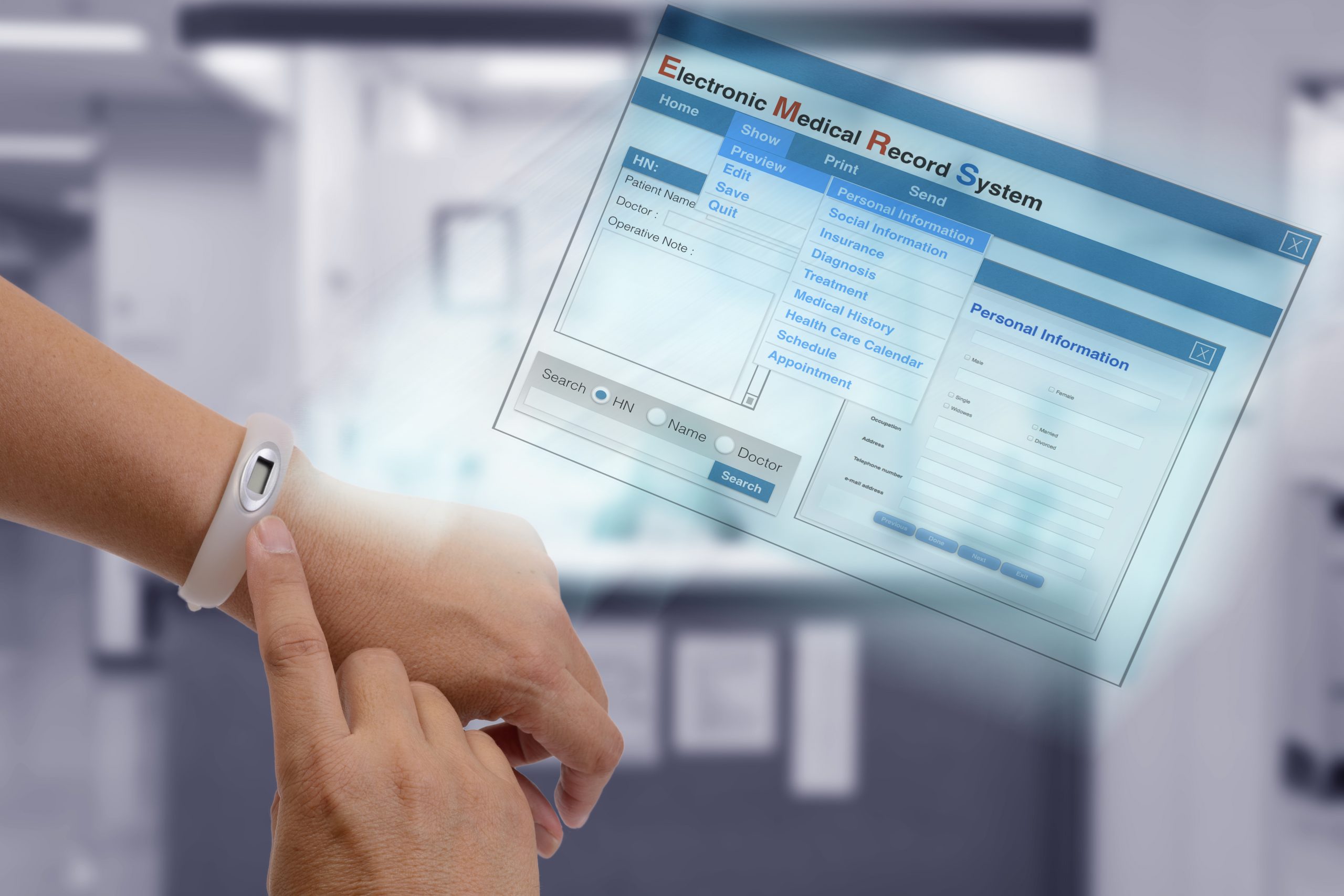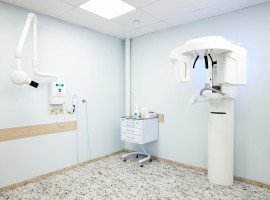Electronic Records Templates are a Force to be Reckoned With
Case Study
Marc Leffler, DDS, Esq.
September 12, 2022
Reading time: 8 minutes

Background Facts
A healthy 24-year-old woman, a third grade teacher, presented to her primary dental office in which a general dentist, Dr. G, practiced alone; an oral surgeon, Dr. S, who was fairly new to practice, traveled to the offices of general dentists, including the distant office of Dr. G, to perform oral surgery on their patients. Dr. G had seen this patient who had been occasionally bothered by her fully impacted tooth #32. After a discussion about the situation, Ms. V agreed to have the tooth extracted, so the office appointed her to see Dr. S on his next planned visit day.
When Dr. S next came to Dr. G’s office, on a snowy March 12th, he was met with a very full schedule of surgical patients, the last of whom would be Ms. V. A panoramic radiograph available to him showed a deeply impacted, horizontal lower right third molar, in close radiographic proximity to the inferior alveolar canal, which the patient said continued to cause her discomfort and which she desired to have extracted. Dr. S and his patient had a discussion about the procedure, but because Dr. G’s office did not make use of, or even have, “informed consent” forms, there was no document that memorialized any aspect of that discussion.
With local anesthesia, Dr. S sectioned the tooth, removed it, irrigated the site, and sutured it; nothing in the surgical procedure was eventful or unusual, and the inferior alveolar nerve was not visualized. As soon as the patient was discharged, Dr. S rushed out of the office, anxious to start his long drive home before the snow-covered roads got too icy. In his haste, he forgot to complete the electronic record entry for the procedure. A week later, on March 19, the patient returned for suture removal, and complained to Dr. G that the right side of her lip and chin were numb, and that she had soreness at the extraction site. Dr. G placed dry socket paste, told the patient that what she was experiencing was normal but it might take some time to resolve, and asked her to return in 6 weeks to place a restoration on a lower left molar. Dr. G did not make a chart entry that day, for reasons never made clear, although she did notify Dr. S about the paresthesia.
Dr. S made his next trip to Dr. G’s office on April 8. Wanting to follow up regarding Ms. V’s paresthesia, he opened the electronic chart, only to realize that he had not made an entry for the surgery, and that Dr. G did not do so either for the post-op visit. So, he immediately made an entry, making use of the “extraction template” that was part of the electronic system. On May 2, Dr. G performed a restoration and made a timely entry, and the following day, she entered a note for the March 19th visit. The electronic record for these visits was as follows (with italics added here for emphasis):
- 4/8: “late entry for 3/12; discussed risks of pain, discomfort, IAN inj. with patient and guardian if applicable; lido/septo l.a.; flap reflected, 702 fissure to section M/D/P roots; Rx Amox 500 or Clinda 150, Ibuprofen, Norco 5/325”
- 5/2: 19 MOD
- 5/3: “late entry for 3/19: pt presents for dry socket 32; irrigate, flush, DS paste; experiencing some numbness; told pt this is normal, can take up to a year to resolve”
The patient never returned to the office, but instead, at approximately 1 year following the last visit above, she presented to a hospital-based oral surgery clinic, where she was told that it was not clear whether the injury would have been amenable to repair under any circumstances, but that she had waited too long for them to attempt it. Her paresthesia never resolved.
Legal Action
Ms. V retained an attorney, who reviewed the records and consulted with an expert, prior to initiating suit against Dr. S – for negligently performing the extraction and failing to obtain the patient’s informed consent – and Dr. G – for failing to timely refer the patient for evaluation of her nerve injury.
Discovery
Most relevant here were the depositions of the plaintiff, Ms. V, and Dr. S. At her deposition, Ms. V testified that Dr. S seemed to be rushed when he spoke with her prior to surgery, and that his discussion with her about the extraction was brief, advising her only that all surgery, including this, has risks, but they are rare and unlikely to occur and unlikely to affect her after a few weeks, at most. She was not advised of any treatment options.
Dr. S testified about the snowstorm and his busy schedule for the day at issue. He also acknowledged that he had not recorded his treatment on that same day, and that he had seen and treated well over 100 patients between March 12 (the date of surgery) and April 8 (the date of chart entry), such that he did not fully recall all of the surgery details by the time he made the entry.
Perhaps most important was his testimony that he simply placed a general full bony impaction template into the record, without even noting which tooth he had removed, and without any modification, including no removal of extraneous, inaccurate aspects of the template, giving his reason for doing so as his lack of familiarity with the relatively new electronic system and his infrequent use of it.
He admitted, during questioning about the specifics of his template entry, that: (1) his recall of the events might not have been “100% accurate” by the time he made the entry; (2) he likely had not provided any treatment options; (3) there are in the area of “12 or so” realistic risks of the procedure, but his entry only listed 3, including only those which came to fruition; (4) there was no discussion with a guardian, as none was needed for an intelligent woman of age majority; (5) he had used Lidocaine only, and no Septocaine, as the local anesthetic (because he never uses Septocaine); (6) he could not possibly have sectioned the palatal root, because lower molars have no palatal roots, by definition; (7) he likely gave an antibiotic prescription, and his choice would have been either Amoxicillin or Clindamycin, but he did not recall which; and (8) he did not prescribe Norco, or any other narcotic analgesic, but most likely suggested an NSAID such as Ibuprofen.
Case Resolution
An expert retained on behalf of Dr. S believed that the decision to extract tooth #32 was appropriate, and although the chart entry lacked surgical details, the deposition testimony by Dr. S as to his usual and customary approach revealed no stated deficiencies. Therefore, the expert would have been able to defend the surgery itself, but she voiced real concerns about the “sloppy look” that the late chart entry and lack of template modifications set out. Regarding the issue of informed consent, the expert concluded that – between the lack of any signed document, the patient’s definitive testimony about the limited pre-surgical information provided to her and the absence of any treatment options, Dr. S’s inability to provide detail of such discussion other than being limited to the 3 risks in the entry, and his acknowledgement of not likely having provided any treatment options – this claim in the case was not defensible.
Regarding Dr. G, both her expert and the plaintiff’s expert concurred that, although she did not provide a timely referral for evaluation of the nerve injury, it was speculative as to whether this type of injury could have been repaired even if addressed soon after the procedure. This led to the plaintiff discontinuing her claim against Dr. G.
With the indefensible claim for lack of informed consent, and Dr. S and his counsel being very concerned about how a jury would view the problematic templated electronic chart entry, Dr. S agreed to making attempts to settle the case, and it was settled before trial.
Takeaways
This case provides a number of risk management concepts, with the primary focus on electronic records and their templates. There is no question that electronic records can be very helpful in terms of note consistency, and using templates for specific procedures can save surgeons valuable time. But ease of use can float into complacency, especially when practitioners are pressed for time and running behind schedule. When selections within templates are not adequately made to reflect the true treatment (or consultation) events, then the resulting entry can detract sufficiently enough from the surgeon’s professional credibility that an otherwise readily defensible case can become indefensible, as this case demonstrates. The enumerated deposition responses above paint a picture of a “sloppy look”, in the words of the expert, allowing savvy plaintiffs’ attorneys to be able to encourage jurors to believe that sloppy in note entries translates to sloppy in surgery.
The actions of Dr. G, and her being let out of the case, demonstrate that, in order for a plaintiff to be successful in a malpractice action, all elements of a cause of action – negligence directly causing injury – must be met by that plaintiff. Here, although it may be argued that Dr. G gave improper advice to the patient regarding how long the healing process might take (the negligence element), it could not be definitively said that the delay in which she participated led to any aspect of the injury, i.e., permanence, because the ability to repair, even with early referral, was an unknown. Speculation cannot serve as support for any element of any claim.
These events show the importance of the informed consent process. Even if there had been no chart issues and even if there were no aspects of surgical planning or performance to be criticized, the plaintiff could still have been successful in obtaining a judgment to compensate her for her injuries, based solely on the failure of Dr. S to have made her a fully informed patient, able to make a decision as to whether to proceed with surgery, or not.
Finally, we briefly address the effects of hastened activities regarding any aspect of care, and for whatever reason. Whether a surgeon may feel rushed because a procedure is taking longer than expected with a full waiting room of patients, or a late-arriving patient throws off the schedule, or a personal matter arises which requires the doctor to leave the office as soon as possible, or a snowstorm creates hazardous roads, stepping out of the rushed mindset and slowing things down will nearly always decrease the potential for surgical, administrative, and communication errors.
Additional Risk Tips content

Surgeon’s Audio Records Reveal Flaws In Informed Consent Process
Oral surgeons who record patient visits should be cautious. Learn how a dentist's own audio records proved detrimental in a malpractice case.

Oral Surgeon Sued by Elderly Patient’s Healthcare Proxy
Oral surgeons must consider patient autonomy. Read a malpractice case about a surgeon who listens to the wants of the healthcare proxy instead of the patient.

Patient with Permanent Nerve Injury Sues OMS for Not Using CBCT
Read about a patient who suffers a permanent IAN injury post-extraction and sues the OMS for failing to use a CBCT to assess the injury beforehand.
This document does not constitute legal or medical advice and should not be construed as rules or establishing a standard of care. Because the facts applicable to your situation may vary, or the laws applicable in your jurisdiction may differ, please contact your attorney or other professional advisors if you have any questions related to your legal or medical obligations or rights, state or federal laws, contract interpretation, or other legal questions.
MedPro Group is the marketing name used to refer to the insurance operations of The Medical Protective Company, Princeton Insurance Company, PLICO, Inc. and MedPro RRG Risk Retention Group. All insurance products are underwritten and administered by these and other Berkshire Hathaway affiliates, including National Fire & Marine Insurance Company. Product availability is based upon business and/or regulatory approval and/or may differ among companies.
© MedPro Group Inc. All rights reserved.